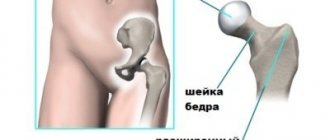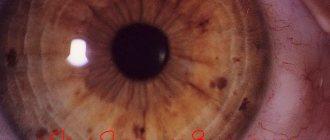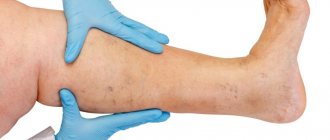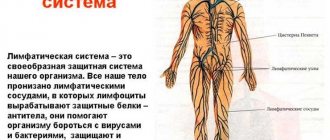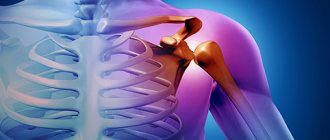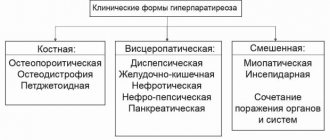What is fibrous dysplasia?
Fibrous dysplasia (FD, Jaffe-Lichtenstein disease) is a rare bone disease. The bone affected by this disease is replaced by abnormal scar (fibrous) connective tissue. This abnormal fibrous tissue weakens the bone, making it abnormally fragile and prone to fracture. Pain may occur in the affected areas of the body. As the patient ages and grows, the affected bone may become deformed (dysplastic).
FD may affect just one single bone (monostotic disease), or the disorder may be widespread, affecting multiple bones throughout the body (polyostatic disease). The severity of the disorder can vary greatly from one person to another. Any part of the skeleton can be affected, but the most commonly affected parts are the long bones of the legs, bones of the face and skull (craniofacial region), and ribs.
Fibrous dysplasia is usually diagnosed in children or adolescents, but mild cases may not be diagnosed until adulthood. In some cases, fibrous dysplasia may not require treatment; in others, certain medications and surgical procedures may be recommended.
Forms of the disease
The most common form of fibrous osteodysplasia is monoosseous. It may be asymptomatic or manifest as pain in the affected bone and pathological fractures. The ribs and bones of the facial skull, especially the upper jaw, are most often affected.
Of other bones, the metaphyses and diaphyses of the proximal femur or tibia may be involved in the process. The skin is usually not changed.
The diagnosis is usually made at the age of 20-30 years. The polyostotic form of the disease is less common. In approximately a quarter of patients, more than half of the bones are affected. Sometimes there is damage to one side of the body or one limb (usually the lower one).
Approximately half of the patients show changes in the bones of the facial skull. In contrast to the monoosseous form, fractures and deformations of the skeleton are detected already in childhood. The earlier the disease begins, the more severe it is.
The course of the disease may stabilize during puberty and worsen during pregnancy. Premature closure of the epiphyseal growth plates leads to short stature.
Signs and symptoms
Often, fibrous dysplasia does not have pronounced symptoms. The patient may not be aware of the disease for a long time, since pain and inconvenience do not occur until a certain level of disease progression. The disease can affect one bone or affect the entire skeletal system. The peculiarity of the damage caused by fibrous dysplasia is determined by the amount of cellular fibrous tissue dotted with blood vessels and scattered bone formations, around which there is bone-like tissue, in turn surrounded by cells. Two types of growths in bones can be distinguished: focal and diffuse.
In the first, focal lesion, the transformed part is isolated from the surrounding tissues and easily moves away from the adjacent bone. The tissue that has undergone transformation becomes dense, but does not lose its elasticity, turns pale, and bone inclusions are clearly visible in it. In the second, diffuse bone lesion, it is impossible to determine the size of the damaged tissue, due to the fact that the adjacent bone becomes porous and soft, and the cortical layer becomes thinner. The porous matter of the bone is replaced by a dense, pale yellow substance. With both types, it is possible to detect single cysts.
Classification
In traumatology and orthopedics, there are two main forms of fibrous dysplasia: monostotic (affecting one bone) and polyostotic (affecting several bones, usually located on one side of the body). The polyostotic form develops in childhood and can be combined with endocrine disorders and melanosis of the skin (Albright's syndrome). The monoosseous form can manifest at any age; endocrinopathies and skin pigmentation are not observed in patients. Russian specialists use Zatsepin’s clinical classification, which includes the following forms of the disease:
- Intraosseous form. May be monoostotic or polyostotic. Single or multiple foci of fibrous tissue form in the bone; in some cases, degeneration of the bone is observed throughout its entire length, but the structure of the cortical layer is preserved, so there are no deformations.
- Total bone damage. All elements are affected, including the cortical layer and the area of the medullary canal. Due to total damage, deformities gradually form, and stress fractures often occur. Polyostotic lesions of long bones are usually observed.
- Tumor form. Accompanied by the growth of foci of fibrous tissue, which sometimes reach significant sizes. Rarely detected.
- Albright's syndrome. It manifests itself as polyostotic or almost generalized bone damage in combination with endocrine disorders, premature puberty in girls, disturbance of body proportions, focal skin pigmentation, severe deformities of the limbs and trunk bones. Accompanied by progressive disorders of various organs and systems.
- Fibrous-cartilaginous dysplasia. It appears as a predominant degeneration of cartilage; transformation into chondrosarcoma is often observed.
- Calcifying fibroma. A special form of fibrous dysplasia, very rare, usually affects the tibia.
Causes
The underlying cause of FD is not fully understood. Researchers believe the disorder is caused by a mutation in a gene called GNAS1. This gene mutation occurs after fertilization of the embryo (somatic mutation) and is therefore not inherited, and affected individuals will not pass the mutation on to their children. Affected individuals have some cells with a normal copy of this gene and some cells with an abnormal gene (mosaic pattern). The variability in fibrous dysplasia symptoms is due in part to the ratio of healthy cells to abnormal cells. Researchers don't know why these somatic mutations occur; they develop randomly for unknown reasons (from time to time).
The GNAS1 gene is located on the long arm (q) of chromosome 20 (20q13.2). Chromosomes, which are present in the nucleus of human cells, carry the genetic information of each person. Cells in the human body usually have 46 chromosomes. The pairs of human chromosomes are numbered 1 to 22, and the sex chromosomes are designated X and Y. Men have one X and one Y chromosome, and women have two X chromosomes. Each chromosome has a short arm, designated "p", and a long arm, designated "q". Chromosomes are further divided into many numbered bands. For example, "chromosome 20q13.2" refers to band 13.2 on the long arm of chromosome 20. The numbered bands indicate the location of the thousands of genes present on each chromosome.
The GNAS1 gene creates (encodes) a protein known as the G protein. In FD, a mutation in the GNAS1 gene leads to overproduction of this G protein. This in turn leads to overproduction of a molecule known as cyclic adenosine monophosphate (cAMP), which is involved in the change (differentiation) of osteoblasts in the bone. Osteoblasts are bone-forming cells that form new bone. The human skeleton is a living tissue that is constantly changing (reconstructing). FD is thought to involve increased bone turnover. Bone turnover is a normal process in which bone is gradually broken down (bone resorption) and then regenerated. Bone turnover includes osteoblasts and cells that control bone resorption (called osteoclasts). The interaction between osteoclasts and osteoblasts determines how bones transform. Interaction is a complex process that includes many factors. Improper differentiation of osteoblasts due to mutation of the GNAS1 gene is thought to contribute to the development of FD. The activity of osteoclasts in removing bone likely allows skeletal progenitor cells, including immature osteoblasts and fibrous tissue, to have more space to grow and multiply.
Diagnostics
Diagnosis is made on the basis of anamnesis and x-ray examination. The latter is mandatory, as this is the best way to study the condition of the skeleton and its tissues. Even if the patient seeks help in the first stages of the disease, x-rays will clearly show areas of deformation. In the picture, these areas will look like frosted glass and contain specific inclusions. If one or more factors are present, the patient may be sent for densitometry and bone CT.
Standard Treatments
In the vast majority of cases, if the deviations are not pronounced and the diagnosis is made at an early stage of fibrous dysplasia, treatment gives positive results. For some patients, standard therapy will be sufficient, but for others, curettage and graft reconstruction may be necessary. Failures occur due to graft resorption and recurrence of initially diagnosed symptoms.
Fibrous dysplasia of the femur in its advanced state leads to a change called “shepherd’s stick.” In case of such a violation, it is necessary to perform a local operation to remove the deformed area and replace it with a suitable graft. In the absence of pathologies and relapses, treatment is successful.
Fibrous dysplasia of the skull in its advanced state turns into a type called “lionism of the face.” With this localization of the disease, the bones seem to swell. If such fibrous dysplasia is detected in children, then light surgical intervention is indicated to eliminate further deformation of the facial bones, taking into account their subsequent growth and development as the patient grows.
FD of the tibia is externally manifested by lameness and gait disturbances; shortening of the limb in which the affected bone tissue is located is rarely noticed. Treatment also requires surgery, plastic surgery and further observation. After the operation, patients are forced to use crutches and orthopedic devices until full or partial recovery.
Possible complications and consequences
The spread of fibrous tissue in the bones of the skull leads to its asymmetry and deformation:
- if the lesion is in the jaw, most often in the lower jaw, the area near the large and small molars is subject to deformation;
- osteodysplasia of the frontal part is more dangerous, since severe deformation may cause displacement of the bone plate and put pressure on the brain;
- if the disease is accompanied by endocrine disorders, there is a high probability of developing pathology at the base of the skull and suppression of the pituitary gland.
Forecast
The prognosis for life is favorable in most cases. However, sometimes, both with polyostotic and monoostotic fibrous osteodysplasia, malignancy occurs with the development of osteogenic sarcoma (see) or fibrosarcoma (see). The prognosis for limb function depends on the form of the disease and the characteristics of its course. Patients with the polyostotic form of fibrous osteodysplasia should be oriented toward acquiring professions that are not associated with heavy physical labor, prolonged standing, and walking.
See also Fibrous osteodysplasia of the jaws.
Bibliography:
Berman A. M. and Vinogradova T. P. Features of fibrous dysplasia of the facial bones, Arch. pathol., t. 27, no. 8. p. 31, 1965; B r a G:-ts e in V. P. Osteodystrophia fibrosa loca-lisata, in the book: 19th Congress of the Russian. hir., p. 301, L., 1928; V i i o g r a d o v a T. P. On the classification of bone tumors and clinical and radiological characteristics of some tumor forms, Orthop. and traumat., No. 5, p. 3, 1900; o n a g e, Bone tumors, p. 247, M., 1973; In about l-k about in M. V. Bone diseases in children, p. 352, M., 1974: V o l k o v M. Vi (I a m o i l o v a L. I. Fibrous osteodysplasia, M., 1973, bibliogr.; K o i n s k a I N. S. Disorders of the development of the osteoarticular apparatus, p. 249, L., 1966; about n and e, Fibrous dystrophies and bone dysplasias, L., 1973, bibliogr.; Multi-volume guide to pathological anatomy, ed. A. I. Strukova, t. F. et al. Histological classification of bone tumors, translated from English, M., 1974; Bogart F. V. a. I m 1 e g A. Fibrous dysplasia of bone, Amer. J. Roentgenol., v. 58, p. 478, 1947; C hangus GW Osteoblastic hyperplasia of bone, Histoehemical appraisal of fibrous dysplasia of bone, Cancer, v. 10, p. 1157, 1957; Fries JW The roentgen features of fibrous dysplasia of the skull and facial bones , Amer. J. Roentgenol., v. 77, p. 71, 1957; Lichtenstein L. Polyostotic fibrous dysplasia, Arch. Surg., v. 36, p. 874, 1938; L ichtenstein L. a. Jaffe H. Fibrous dysplasia of bone, Arch. Path., v. 33, p. 777, 1942; Schajowicz F. Tumors and. tumor-like lesions of bone, p. 478, NY ao 1981; Strassburger P., G ar-b e g S. a. H a 1 1 o ck H. Fibrous dvsplasia of bone, J. Bone Jt Surg., v. 33-A, p' 407, 1951.
L. I. Samoilova; I. P. Korolyuk (rent), V. S. Yagodovsky (pat. an).

